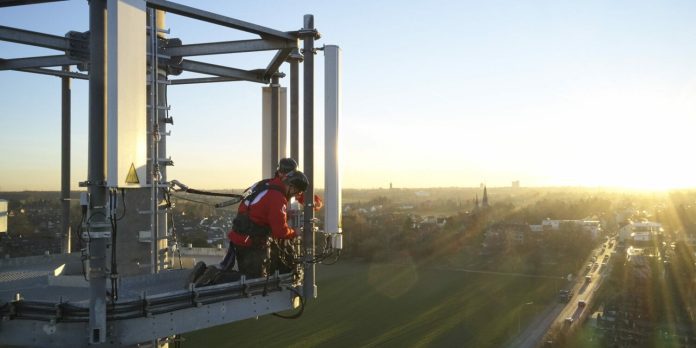Vodafone said it has equipped more than 16,000 of its 26,000 mobile stations with 5G technology
German operator Vodafone announced the activation of its 5G Standalone (5G SA) network nationwide. In a release, the telco noted that this rollout allows all customers with compatible smartphones to access 5G services for both internet and calls at all 5G locations, eliminating the need to rely on LTE technology.
Previously, Vodafone Germany operated half of its 5G network using the LTE/4G core infrastructure. With the 5G SA offering, customers will get faster connections and significantly lower latency, which is crucial for smooth, lag-free mobile gaming and for applications involving augmented reality (AR) and virtual reality (VR), the telco said.
“We are transitioning 5G to ‘real-time communication’ today, bringing the fastest network to millions more people across the country,” said Vodafone Germany CEO Marcel de Groot. “Our technicians have been preparing for weeks, and we can now activate 5G+ technology at an additional 10,000 mobile stations. 5G+ delivers higher bandwidth, lower response times, and supports up to ten times more connected sensors, improving the quality of online gaming and virtual worlds for mobile users.”
In 2021, Vodafone said it became the first operator in Germany to move away from relying solely on the expansion of existing LTE networks for its 5G services. Instead, the company began constructing a fully independent 5G infrastructure that operates without an LTE backbone in both the antenna and core networks. 5G SA network was initially rolled out in select locations for industrial use and early adopting customers, the telco added.
Vodafone Germany had initially launched its 5G SA network in partnership with Ericsson, Nokia, Qualcomm and Oppo.
Vodafone’s 5G SA technology utilizes frequencies in the 700 MHz, 1.8 GHz and 3.5 GHz ranges. To date, the company has equipped more 16,000 of its 26,000 mobile stations with 5G technology. This means that Vodafone now provides 5G coverage to approximately 92% of the population, with over 90% also having access to 5G SA. By mid-2025, this coverage is expected to reach 95%.
Vodafone Germany also noted that the 5G SA network supports the aggregation of multiple frequencies, enabling speeds in excess of 1,000 Mbps on some smartphones.
Despite the broad availability of the 5G SA network, Vodafone noted it continues to run a mixed network, operating both 5G SA and 5G NSA technologies simultaneously. This allows smartphones that are not yet optimized for 5G SA to still benefit from Vodafone’s extensive 5G coverage.
Vodafone initially launched its 5G network in Germany in 2019, using 3.5 GHz frequencies that it acquired from Telefónica in 2018.
The company had previously completed a field test with Open RAN (O-RAN) technology in Plauen, in the Saxony region.
The Germany carrier had previously announced that it will carry out comprehensive pilot projects for open 5G radio access networks at several locations in Germany. The first two stations for the operator’s O-RAN technology are located in rural Bavaria. The pilots are scheduled to start in early 2023 and mark the beginning of a broader deployment of O-RAN technology in Vodafone’s European mobile networks.
The pilot projects will use O-RAN hardware and software, which Vodafone has successfully tested in the U.K. Samsung is currently supplying mobile technology and software for these O-RAN trials.

